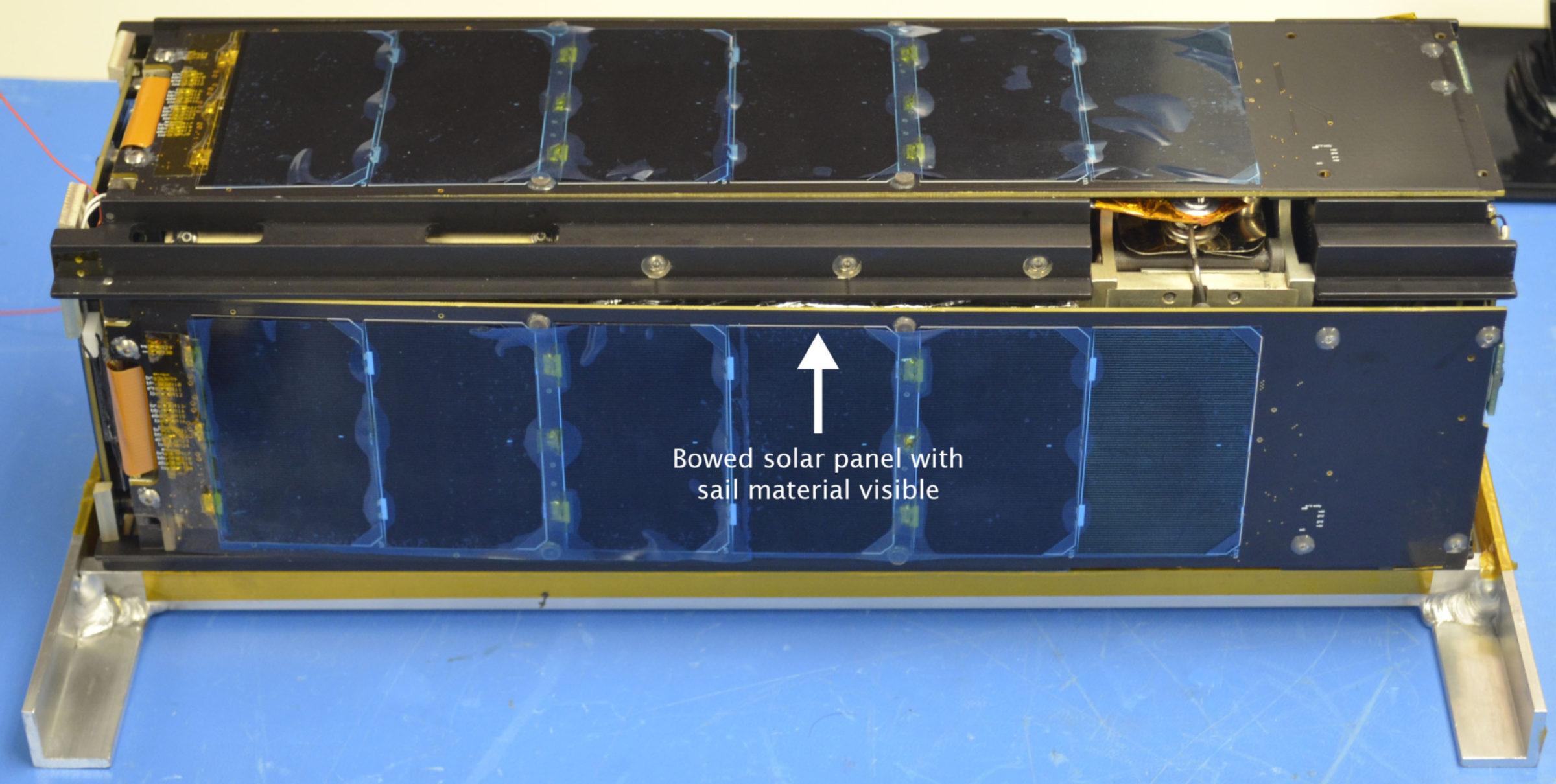Jason Davis • Oct 15, 2014
As Deadlines Loom, LightSail Bends but Doesn't Break
The Planetary Society's LightSail 1 spacecraft is oh-so-close to completing a final series of tests that pave the way for a possible 2015 test flight. On the heels of a successful day-in-the-life test, the spacecraft scored another victory by passing its "inhibit deploy" test. Basically, LightSail had to show that it could sit still during its ride to orbit, and not suddenly try to deploy its antenna, solar panels, or even worse—solar sails, which could damage the launch vehicle. The inhibit deploy test officially froze the spacecraft's software for the test mission.
The final hurdles remaining to be cleared are a random vibration test to simulate an Atlas V flight, as well as a trip through the thermal vacuum chamber. Those tests were scheduled to begin last week at Cal Poly San Luis Obispo. But when LightSail reported for duty, the temperamental little spacecraft threw its team another curveball: It wouldn't fit comfortably into its P-POD. The P-POD, or Poly-PicoSatellite Orbital Deployer, is a small container designed to hold three CubeSats, or one 3-unit CubeSat like LightSail. CubeSats nestle into P-PODs on top of large springs. When it's safe to deploy, a P-POD opens its hatch and springs its payload into space. It's an elegant, simple process.
Here's a great video by Justin Foley, our Cal Poly team lead, showing how CubeSats are loaded into P-PODs. It also shows the P-PODs being attached to the bottom of an Atlas V Centaur upper stage, and ends with an amazing photograph of the Centaur by one of the CubeSats. You'd be hard-pressed to find a more comprehensive, inside look at the integration process. Many thanks to Justin for clearing the publication of this video with all of the parties involved, including the National Reconnaissance Office.
OUTSat integration and launch video This video shows the integration and launch process for OUTSat, the Operationally Unique Technique Satellite, a CubeSat deployer that hitched a ride to space aboard an Atlas V in 2012. The primary payload was NROL-36.Video: Justin Foley
Because CubeSats and P-PODS are standardized to precise dimensions, LightSail can't take up more than 10 by 10 by 30 centimeters of space. The spacecraft's four Mylar sails—which unfurl to a size of 32 square meters—fit snugly into the spacecraft, accordion-style. They're such a tight fit, the solar panels actually help hold the sails in place until the panels swing open prior to sail deployment. As a result, the sails constantly apply pressure to the solar panels, which cause the panels to bow. Here's a close-up; you'll notice a little sail material is visible behind the solar panel:

The bowing phenomenon is a known issue that was accounted for in the spacecraft's original design. Unfortunately, LightSail spent more than two, long years in storage, and during that time, the bowing increased. When the spacecraft was brought in for vibration testing at Cal Poly, it was determined that the bowing had increased the spacecraft's dimensions beyond the required 10 centimeters, meaning a hardware fix would have to be implemented.
Riki Munakata and the LightSail team brought the spacecraft back to Ecliptic Enterprises Corporation in Pasadena. There, they designed a stiffener bracket that will be attached to the outside of the spacecraft's solar panels, bringing the bowing under control. Here's what the bracket looks like (the red piece):

The bracket is currently being fabricated and anodized, and the team hopes to have it installed next week. That clears the way for a return to testing, with a goal of having the spacecraft ready for final P-POD integration by November 1.
One final note: In my last blog post, I asked the image processing community for help combining two images from LightSail's onboard cameras, with the intention of creating a rudimentary top-down selfie. The request turned out to be a tall order, since the two camera images barely overlap. But pretty picture guru James Canvin was up for the challenge, and created this:

It's a great shot considering what he had to work with—thanks, James! Hopefully, we'll be able to call on his help again in creating a future version of this image with Earth in the background.
Support our core enterprises
Your support powers our mission to explore worlds, find life, and defend Earth. You make all the difference when you make a gift. Give today!
Donate

 Explore Worlds
Explore Worlds Find Life
Find Life Defend Earth
Defend Earth

